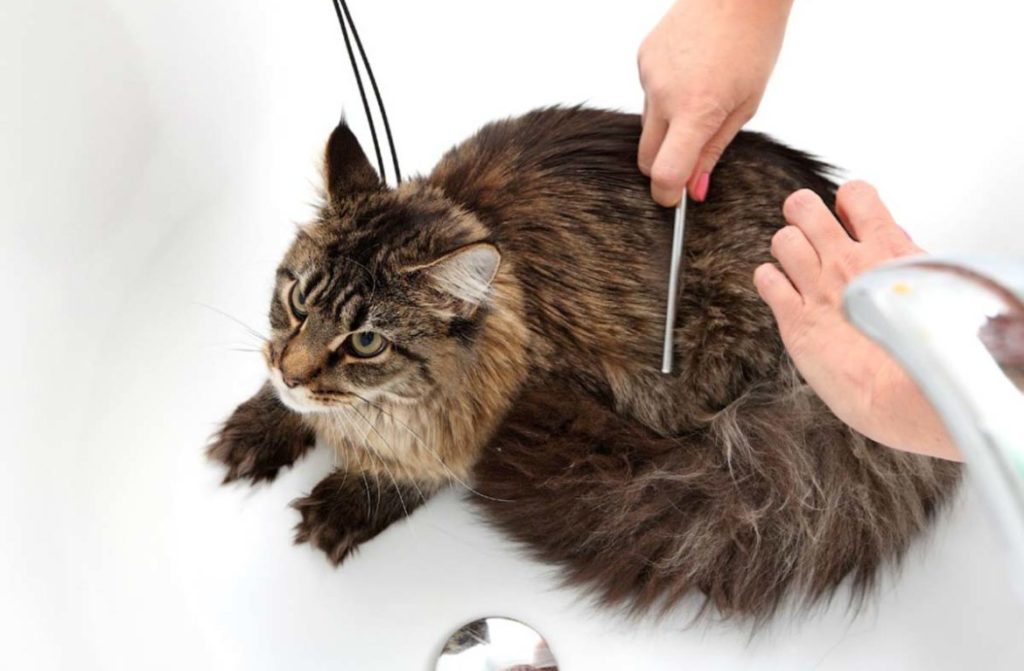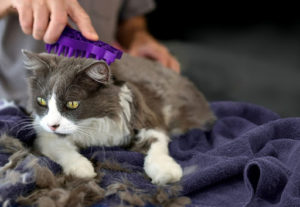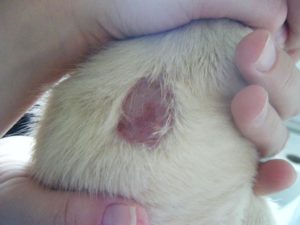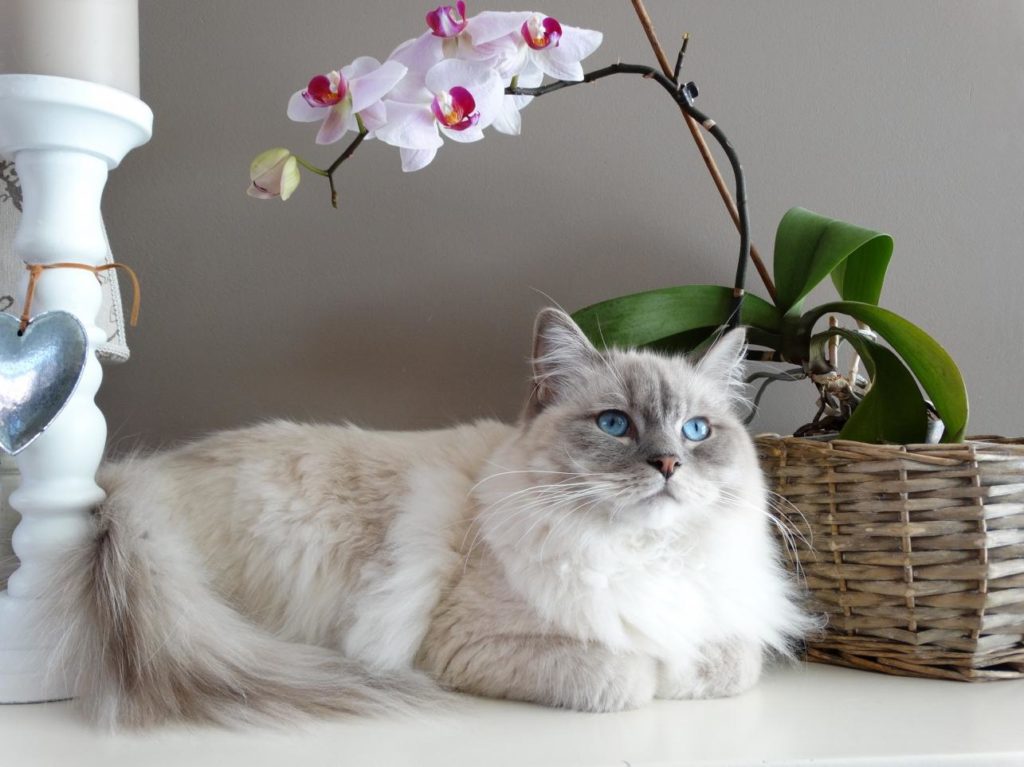A fluffy and smooth coat is a sign of good health for your cat. However, thinning hair, although it creates the problem of frequent cleaning, is not always an indicator of illness. After all, cat hair loss is a natural phenomenon for a pet. However, sometimes, the cause of excessive hair loss is a pathology that requires immediate contact with a veterinarian. Let’s look at the causes, treatment methods, and preventive measures against hair loss in cats.
Why does a cat lose hair?
The owner of a cat must clearly understand when shedding is considered normal and when partial baldness means the presence of pathological processes in the pet’s body.

The leading causes of hair loss in cats:
Natural:
- Seasonal shedding. All adult pets shed in autumn and spring, so their undercoat thickens before winter and thin out by spring. In long-haired cats (Persian, Angora), shedding occurs profusely, causing the fur to fall in clumps.
- Wrong diet. Insufficient vitamins and microelements (especially vitamin B) in the pet’s body can lead to thinning of the coat. The same effect is ensured by feeding the cat economy-class food and human food (fried, smoked meats, and food generously seasoned with pepper and salt). The consequences of such a diet are allergies and severe forms of digestive system diseases.
- Age. Older animals have less thick hair than younger ones. If your cat’s hair falls out in places, it’s not a big deal. However, it is essential to remember the high risk of developing diseases in older pets.
- Pregnancy and feeding kittens. Like women, pregnant cats thrive for the first time and then sacrifice their health for the next generation’s sake. To facilitate access to milk, the area around the nipples is exposed. More severe shedding begins after birth and lasts until the end of lactation.
- Stress. A change of environment, severe punishment, or the appearance of a new pet in the house can cause increased emotional stress in a tailed friend. The body interprets refusal to eat and severe anxiety as a threat to life. All forces are spent on protecting the primary organs, without which survival is impossible. Therefore, the skin and hair follicles are the last to be nourished.

Skin diseases:
- Hypotrichosis – partial or complete absence of hair on the animal’s body from the first months of life. Seborrhea often develops in bald areas that acquire a dark tint. This feature makes the kitten’s body sensitive to sunlight and frost.
- Lichen—baldness in cats caused by a fungus. The disease is contagious and can be dangerous to humans. The infection is characterized by itching, redness of the surface layer of the skin and its peeling, and deformation of the claws. The main characteristic feature of this pathology is constantly growing bald spots.
- Alopecia – hair loss not over the entire body surface but only in certain areas.
- Baldness in the area of ”injections – after subcutaneous administration of some drugs, a bald spot may appear at the injection site. You should consult a veterinarian if it does not go away for too long.
- Solar dermatosis – a disease that occurs with increased sensitivity to sunlight. Accompanied by redness, itching, and peeling of the skin. The disease develops in animals with a white coat because their bodies do not produce melamine, which protects them from sunlight. Without treatment, the risk of malignant formations on the skin increases.
- Endocrine system dysfunction – hormonal imbalance not related to childbirth. Taking hormonal drugs to reduce libido can lead to itching and symmetrical hair loss on both sides of the body.
- Oncological disease:” The anti-cancer fight takes a lot of energy from the animal’s body. Therefore, the nutrition of hair follicles becomes very difficult. If you notice the first signs of a severe illness (weight loss, bloating, constant thirst, and bloody vomiting), take your pet immediately for a diagnosis. In the initial stages, cancer can be cured.
- Dandruff—Dry seborrhea appears when insufficient sebum secretion is responsible for exfoliating the skin. Signs include a painful odor, itching, weakening of hair follicles, and severe hair loss. The most common cause is decreased immunity.
- When fleas or ticks ” dig” into the skin, ectoparasites secrete a foreign protein that provokes itching. By frequently scratching the affected areas, the cat infects the wounds a second time, which leads to suppuration. The parasites most commonly affected are the tail, back, neck, back, and paws.

Other diseases:
- Allergy – hypersensitivity reaction to a food or non-food pathogen. In addition to hair loss, an allergic reaction may be accompanied by severe itching. Scratched areas on the body become red and peel, followed by eczema or blisters. Sometimes, the functioning of the intestines and lacrimal ducts worsens, and rhinitis develops.
- Hyperthyroidism – hyperfunction of the thyroid gland, in which the natural secretion of hormones increases, which leads to seborrhea. After petting a cat, pieces of fur stick to your hands, often a signal of a malfunction of the digestive system, liver, or kidneys. Symptoms of hyperthyroidism include loss of appetite, weight loss, vomiting, diarrhea, and increased urination.
- Helminthiasis – one of the common causes of baldness, which provokes severe body intoxication. An animal with worms has a poor appetite, upset stomach, vomiting, and sudden weight loss.
- Autoimmune diseases are diseases in which immune cells synthesize antibodies that mistake their cells for foreign ones, destroying them. Hair follicles are also destroyed. In addition, the growth of new hairs is suppressed, so bald areas are not restored.

What to do if your cat’s hair is falling out?
If your cat has lost a clump of hair, which continues for a long time, it is time to seek professional help from a veterinarian.
To determine the diagnosis, instrumental and laboratory research methods are used:
- Study of hair microstructure.
- Blood analysis.
- X-ray.
- Ultrasound of internal organs.
- Using a Wood’s lamp.
- Deep scraping of the skin.
The animal is prescribed surgical or drug treatment depending on the diagnostic results. If cancer is detected, the tumor is cut off.

Drug treatments for hair loss in cats involve the use of the following medications:
- Antiparasitic – against ticks, worms, fleas.
- Sedatives – to suppress the activity of the central nervous system.
- Antihistamines – to slow the release of histamine in case of allergies
- Immunostimulants – to increase the body’s defenses.
- Antifungal and antibacterial – to suppress the vital activity of fungi, microbes, and bacteria that harm the pet’s body.
In addition to medications, shedding cats are prescribed antiseborrheic ointments, shampoos, and antiseptics to treat skin with suppuration. If symptoms of a food allergy appear, the pet is prescribed a strict diet.
How do you feel about dealing with shedding in apartment cats?
Seasonal molting is common to all animals, and even insects. If your cat sheds hair twice a year, this is normal. But a pet that is constantly within the apartment loses its biorhythms, which are responsible for regulating shedding. This can be affected by central heating, stress accompanied by metabolic disorders, lack of physical activity, and poor nutrition. Therefore, a cat can shed constantly throughout the year. This process may intensify in the off-season.

Prevention of hair loss in cats includes:
- Proper nutrition with high-quality food, considering the cat’s breed, age, and other characteristics.
- Vitamins for cats against hair loss should be given to the animal before autumn and spring molting.
- Regular combing with special combs and brushes. Many cat lovers consider the Furminator the most effective hair care product. He combs out not only fallen hairs but also hairs that will soon fall out. The procedure takes place with comfort for the pet.
You can follow the tips above to keep your mustachioed pet’s fur smooth and silky and minimize hair loss.
Determining the causes of hair loss in cats, treatment:




